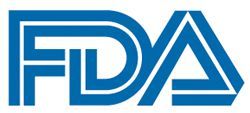News
Article
FDA Approves Lutetium Lu 177 Dotatate for Pediatric SSTR+ GEP-NETs
Author(s):
The FDA has approved lutetium Lu 177 dotatate for pediatric patients 12 years of age and older with SSTR–positive GEP-NETs.
FDA

The FDA has approved lutetium Lu 177 dotatate (Lutathera) for the treatment of pediatric patients 12 years of age and older with somatostatin receptor (SSTR)–positive gastroenteropancreatic neuroendocrine tumors (GEP-NETs), including foregut, midgut, and hindgut neuroendocrine tumors.1
The approval was supported by pharmacokinetic, dosimetry, and safety data from the phase 2 NETTER-P trial (NCT04711135), as well as efficacy data from the phase 3 NETTER-1 trial (NCT01578239).
The FDA previously approved lutetium Lu 177 dotatate for the treatment of adult patients with SSTR-positive GEP-NETs in January 2018.2 This initial approval was supported by data from NETTER-1.
"While GEP-NETs in children and adolescents are rare, the impact can be devastating. Today’s approval addresses a critical need for new treatment options for these vulnerable patients,” Theodore Laetsch, MD, trial investigator for NETTER-P and director of the Developmental Therapeutics Program at the Children’s Hospital of Philadelphia, stated in a news release.3 “The introduction of radioligand therapy significantly advanced how we treat GEP-NETs, and I’m encouraged that younger patients now have the potential to benefit from this innovation.”
In the pediatric indication, the recommended dose of lutetium Lu 177 dotatate dose is 7.4 GBq (200 mCi) every 8 weeks (± 1 week) for a total of 4 doses. Notably, premedications and concomitant medications are recommended as needed.1
The FDA issued a post-marketing requirement to assess the long-term safety of lutetium Lu 177 dotatate in adolescent patients.
NETTER-P
The ongoing, international, multicenter, open-label, single-arm NETTER-P trial evaluated the safety of lutetium Lu 177 dotatate in 9 pediatric patients, including 4 who had GEP-NETs. Findings showed that adverse effects (AEs) were similar to the safety profile observed in adult patients treated with the agent.
The trial enrolled patients 12 to 17 years of age with locally advanced or metastatic, inoperable, histologically proven, G1 or G2 (Ki-67 index of no more than 20%), well-differentiated GEP-NET. The study also included a cohort of patients with locally advanced or metastatic, inoperable, histologically proven pheochromocytoma or paraganglioma (PPGL). Patients needed to have SSTR expression confirmed by SR imaging within 3 months prior to enrollment. A Kanrofsky performance status or Lansky performance status of at least 50 was also required.4
All patients received lutetium Lu 177 dotatate at 7.4 GBq (200 mCi) once every 8 weeks for a total of 4 doses, translating to a cumulative dose of 29.6 GBq (800 mCi). Additionally, a 2.5% Lysine-Arginine amino acid solution was administered concomitantly.
Incidence of AEs after the first treatment cycle and the absorbed radiation doses to the target organ served as the trial's co-primary end points. Secondary end points included AEs during short-term follow-up; AEs during long-term follow-up; comparison of absorbed organ doses between adolescent patients and adult patients; and pharmacokinetics.
NETTER-1
The randomized, controlled trial evaluated the efficacy and safety of lutetium Lu 177 dotatate in patients with advanced, progressive, SSTR-positive midgut neuroendocrine tumors. Patients were randomly assigned to received the agent in combination with best supportive care (BSC), including octreotide long-acting repeatable; or BSC alone.5
Findings from the primary analysis of NETTER-1 showed that patients treated in the lutetium Lu 177 dotatate group (n = 116) experienced an estimated 20-month progression-free survival (PFS) rate of 65.2% (95% CI, 50.0%-76.8%) compared with 10.8% (95% CI, 3.5%-23.0%) for those treated with BSC alone (n = 113).
Additionally, the overall response rate (ORR) was 18% for the lutetium Lu 177 dotatate group vs 3% for the control group (P <.001).
Patients at least 18 years of age with well-differentiated, metastatic midgut neuroendocrine tumors were randomly assigned to receive lutetium Lu 177 dotatate at 7.4 GBq once every 8 weeks for 4 total infusions plus BSC, including intramuscular octreotide long-acting repeatable at 30 mg; or octreotide long-acting repeatable alone at 60 mg once every 4 weeks.
PFS was the trial's primary end point. Secondary end points included ORR, overall survival (OS), and safety.
Long-term findings showed that the secondary end point of OS was not met. At a median follow-up of 76.3 months (range, 0.4-95.0) for the experimental group and 76.5 months (range, 0.1-92.3) in the control group, the median OS was 48.0 months (95% CI, 37.4-55.2) in the lutetium Lu 177 dotatate group vs 36.3 months (95% CI, 25.9-51.7) in the BSC group (HR 0.84; 95% CI, 0.60-1.17; two-sided P = .30).6
References
- FDA approves lutetium Lu 177 dotatate for pediatric patients 12 years and older with GEP-NETS. FDA. April 23, 2024. Accessed April 23, 2024. https://www.fda.gov/drugs/resources-information-approved-drugs/fda-approves-lutetium-lu-177-dotatate-pediatric-patients-12-years-and-older-gep-nets
- FDA approves lutetium Lu 177 dotatate for treatment of GEP-NETS. FDA. January 26, 2018. Accessed April 23, 2024. https://www.fda.gov/drugs/resources-information-approved-drugs/fda-approves-lutetium-lu-177-dotatate-treatment-gep-nets
- Novartis radioligand therapy Lutathera FDA approved as first medicine specifically for pediatric patients with gastroenteropancreatic neuroendocrine tumors. News release. Novartis. April 23, 2024. Accessed April 23, 2024. https://www.novartis.com/news/media-releases/novartis-radioligand-therapy-lutathera-fda-approved-first-medicine-specifically-pediatric-patients-gastroenteropancreatic-neuroendocrine-tumors
- Study to evaluate safety and dosimetry of Lutathera in adolescent patients with GEP-NETs and PPGLs. ClinicalTrials.gov. Updated February 15, 2024. Accessed April 23, 2024. https://clinicaltrials.gov/study/NCT04711135
- Strosberg J, El-Haddad G, Wolin E, et al. Phase 3 trial of 177Lu-dotatate for midgut neuroendocrine tumors. N Engl J Med. 2017;376(2):125-135. doi:10.1056/NEJMoa1607427
- Strosberg JR, Caplin ME, Kunz PL, et al. 177Lu-Dotatate plus long-acting octreotide versus high‑dose long-acting octreotide in patients with midgut neuroendocrine tumours (NETTER-1): final overall survival and long-term safety results from an open-label, randomised, controlled, phase 3 trial. Lancet Oncol. 2021;22(12):1752-1763. doi:10.1016/S1470-2045(21)00572-6









